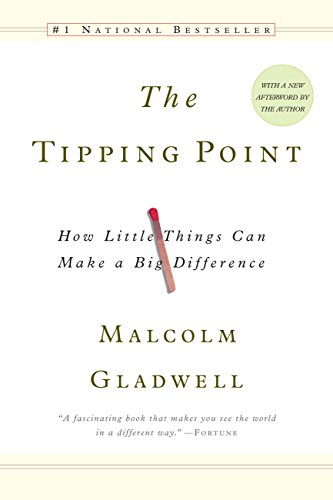

This article is an excerpt from the Shortform summary of "The Tipping Point" by Malcolm Gladwell. Shortform has the world's best summaries of books you should be reading.
Like this article? Sign up for a free trial here .
In the mid-1990s, a syphilis epidemic exploded in Baltimore. The disease had been present in the city previously, but the confluence of a few, relatively minor factors created a tipping point; all three rules of epidemics were at work.
What are the three rules of epidemics? How do these rules transcend medical epidemics and apply to the spread of ideas? Learn how the lessons from Baltimore’s syphilis epidemic apply to your life–small factors can make a big difference.
Syphilis Epidemics and the 3 Factors of Epidemics
Before we look at syphilis epidemics specifically, let’s look at the factors that contribute to all epidemics.
There are three factors that can be adjusted to turn an idea into a social epidemic: the messenger, the message itself, or the context of the message.
- The Law of the Few: Certain types of people are especially effective at spreading an infectious idea, product, or behavior.
- The Stickiness Factor: You can change the presentation of a message to make it more contagious and stickier (having a more lasting impact).
- The Power of Context: The environment in which the message or idea is delivered can have a huge impact on whether enough people adopt and spread it to create an epidemic.
Baltimore’s Syphilis Epidemic
Factor #1: The Law of the Few
When looking at Baltimore’s syphilis epidemic, first we’ll look at how the first principle, the law of the few, played out.
When you’re trying to spread a message, idea, or product to epidemic proportions, you can’t do it all yourself; you need people to help preach your message and spread the word to the masses. But not just anyone will do. The Law of the Few proposes that there are certain, special types of people who are much more effective at broadcasting your idea and getting people to listen and follow suit in order to create an epidemic.
Patient Zero of AIDS is an example of the power of key players in the spread of epidemics. This so-called Patient Zero was Gaetan Dugas, who falls into the category of being particularly well connected. Dugas was a French-Canadian flight attendant who reportedly had 2,500 sexual partners across North America. Dugas is linked to at least 40 of the first cases of AIDS in California and New York.
The Law of the Few is a more extreme version of the 80/20 Principle in economics, which dictates that in a given situation, about 20 percent of participants will be responsible for 80 percent of the “work.” For example, 20 percent of drivers cause 80 percent of all traffic accidents. And in many societies, 20 percent of criminals are responsible for 80 percent of crimes.
The Law of the Few and the Baltimore Syphilis Epidemic
A disproportionately large number of people who were likely to be exposed to syphilis in Baltimore were concentrated in two housing projects that bordered the epicenter of the city’s syphilis problem. These two housing projects were demolished around the same time, displacing many infected people to other areas of the city. This spread the disease more widely to other communities, rather than keeping it relatively contained in one or two areas of the city.
Factor #2: The Stickiness Factor
The second factor of the syphilis epidemic in Baltimore is the stickiness factor.
Epidemics tip not only because of the behavior of a handful of key players. A change in the contagiousness and strength of the virus, message, or idea itself can also cause it to tip.
In medical terms, this is when a virus evolves to become more contagious or more infectious. When that happens, people who are infected are less able to fight it off, or stay sick longer, creating more opportunity to infect more people.
- A Dutch AIDS researcher named Jaap Goudsmit traced what he believed to be one of the earliest HIV epidemics to a Dutch hospital ward dedicated to caring for underweight and premature infants. Over the course of three years in the 1950s, 81 infants came down with a form of pneumonia that is closely associated with HIV (which depletes people’s ability to otherwise fight off the illness). Only 24 of the sick infants died, indicating that the HIV virus was less deadly than the form that infected and killed so many people in the 1980s. The virus itself morphed to become more virulent, making it more effective in creating an epidemic.
In social epidemics, this is the factor that makes a message stick or make an impact. In a marketing context, stickiness makes an ad stand out from the white noise of all the media we encounter. (Shortform example: Think of advertisements from 20 or more years ago that still stand out in your head. Maybe it’s the Budweiser “Whassup?” commercial, or (stretching back almost 50 years) the “Mikey Likes It” Life cereal ads.)
To understand the importance of the Stickiness Factor, consider this: If you don’t remember the message, what are the chances you will change your behavior or buy the product? Making an idea sticky and impactful is often a matter of surprisingly small, subtle changes.
The Stickiness Factor and the Baltimore Syphilis Epidemic
Medical services in the city’s poorest areas took a budgetary hit, cutting the capacity to serve patients in STD clinics. As a result, patients with syphilis had to wait an additional few weeks before getting treatment, in the meantime infecting more people and effectively making the disease more contagious.
Factor #3: The Power of Context
The third factor of the syphilis epidemic is the power of context.
Human behavior is greatly affected by the context of our environments. The Power of Context capitalizes on this insight and suggests altering the context in which people receive your message or idea can make them more receptive to it. This is a little abstract, so let’s take a look at some examples.
On a small scale, you probably behave differently whether you’re with your family, your coworkers, or your old college friends. You’re also likely to act differently in public than you do in the privacy of your home. Is this effect powerful enough to determine whether you follow a fashion trend or join a social movement?
We often don’t realize how profoundly the environment alters how we act. Context changes subconsciously cue us to behave differently — sometimes drastically so — or force us into a new routine that has ripple effects on our actions.
Even subtle changes can have a significant effect on how we act. In 1964, a woman named Kitty Genovese was stabbed and killed on a NYC street, despite the fact that there were 38 people witnessinges to the attack. At the time, most reports of the incident blamed witnesses’ inaction on urban callousness. Psychologists later attributed this to the “bystander effect,” which says that when people are in a group, they are less likely to act because they either assume someone else will or assume the problem is less serious because other people are not acting. Genovese, then, would have had a better chance of getting help if she’d been attacked in a more discreet location with just one witness. However, most reports of the incident blamed witnesses’ inaction on urban callousness.
The Power of Context and the Baltimore Syphilis Epidemic
A rise in crack cocaine drew people to poor neighborhoods to buy drugs, increasing the risk of more people getting infected and bringing the disease back into their own neighborhoods. Crack use and addiction also tend to lead to risky sexual behavior, which exacerbates the spread of STDs.
———End of Preview———

Like what you just read? Read the rest of the world's best summary of "The Tipping Point" at Shortform . Learn the book's critical concepts in 20 minutes or less .
Here's what you'll find in our full Tipping Point summary :
- What makes some movements tip into social epidemics
- The 3 key types of people you need on your side
- How to cause tipping points in business and life






